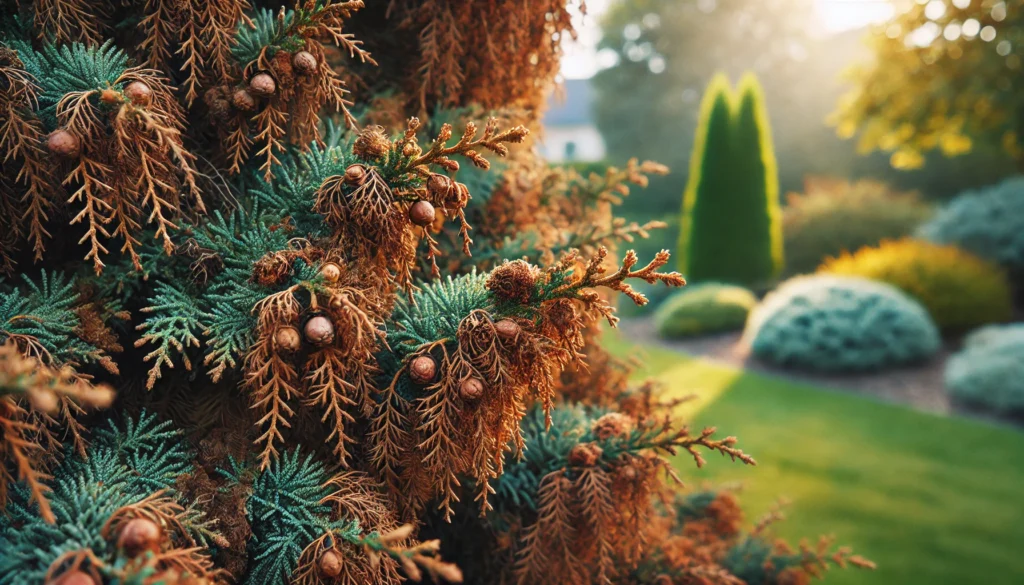
Juniper Tree Turning Brown: Common Causes and How to Fix It
Is your juniper tree turning brown, and you’re unsure why? Don’t worry – you’re not alone! Many gardeners face this issue, and it’s often a sign that something’s off with your tree’s health. Whether it’s due to overwatering, pests, or environmental stress, brown needles can indicate a variety of underlying problems.
In this guide, we’ll explore the most common causes of juniper tree turning brown and provide practical solutions to restore your tree to its vibrant, healthy state. By understanding the root cause and taking the right steps, you can help your juniper thrive once again. Keep reading to learn how to tackle this common issue with confidence!
Table of Contents
ToggleUnderstanding the Problem: Why Is My Juniper Tree Turning Brown?
If your juniper tree is turning brown, it can be concerning, but it’s a problem that can often be resolved with the right care. Understanding why this is happening is the first step toward saving your tree and restoring its health. There are several common causes for browning juniper trees, and identifying the right one will help you take the right action. Let’s dive into the potential reasons and how you can address them!
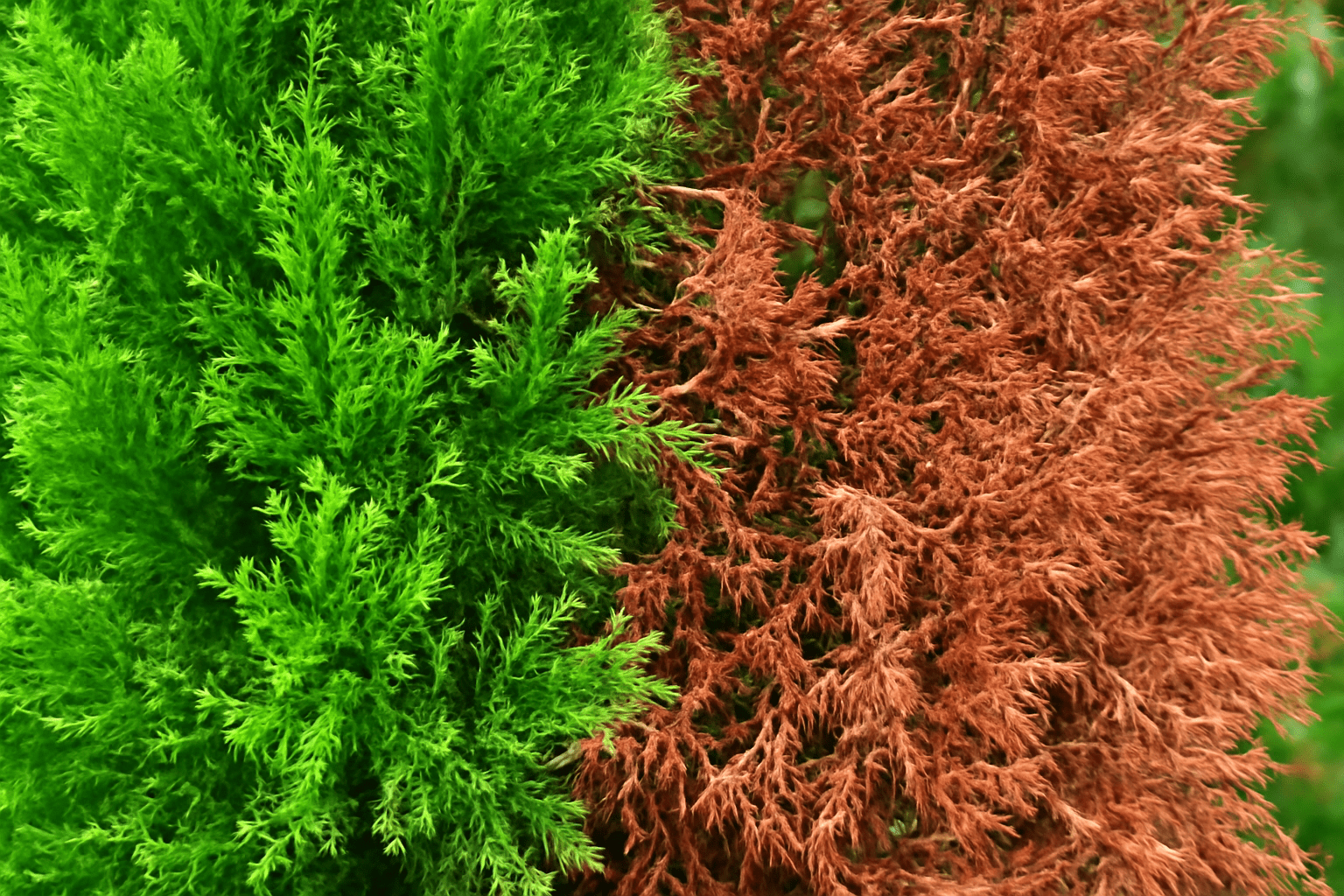
1. Water Stress (Too Much or Too Little) 
Both overwatering and underwatering can cause juniper trees to turn brown. These trees are hardy, but they need well-drained soil. If the roots sit in soggy soil, they can rot, causing the tree to brown. Conversely, if the tree doesn’t get enough water, the leaves (or needles) can dry out and turn brown. Make sure the soil is moist but not waterlogged.
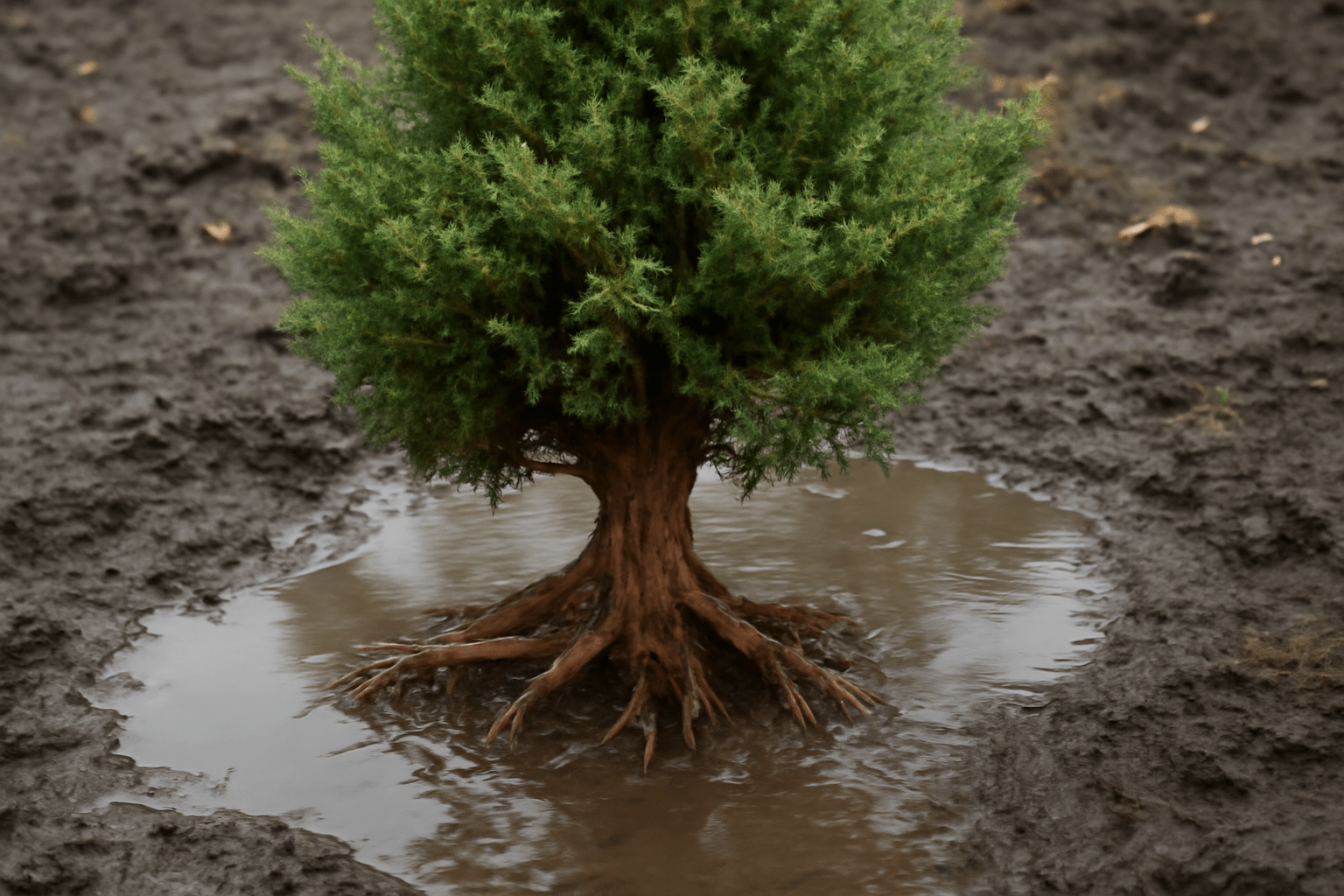
2. Pests and Diseases 
Juniper trees are susceptible to various pests, such as spider mites, aphids, and scale insects, which can damage the needles. If left unchecked, these pests can cause discoloration. Additionally, fungal diseases like Phomopsis tip blight or Juniper blight can lead to brown spots on the tree. Regular inspection for pests and applying organic or chemical treatments can help.
3. Environmental Stress (Temperature Changes) 
Extreme temperatures, especially during the winter, can cause juniper trees to experience stress, leading to browning. Cold winds, sudden temperature drops, or a late frost can damage the foliage. Providing winter protection, like covering the tree with burlap, can help minimize this risk.
4. Improper Pruning 
Over-pruning or cutting too much of the tree at once can stress the juniper, causing it to turn brown. Always prune carefully, removing only dead or diseased branches, and avoid cutting back too much of the healthy foliage.
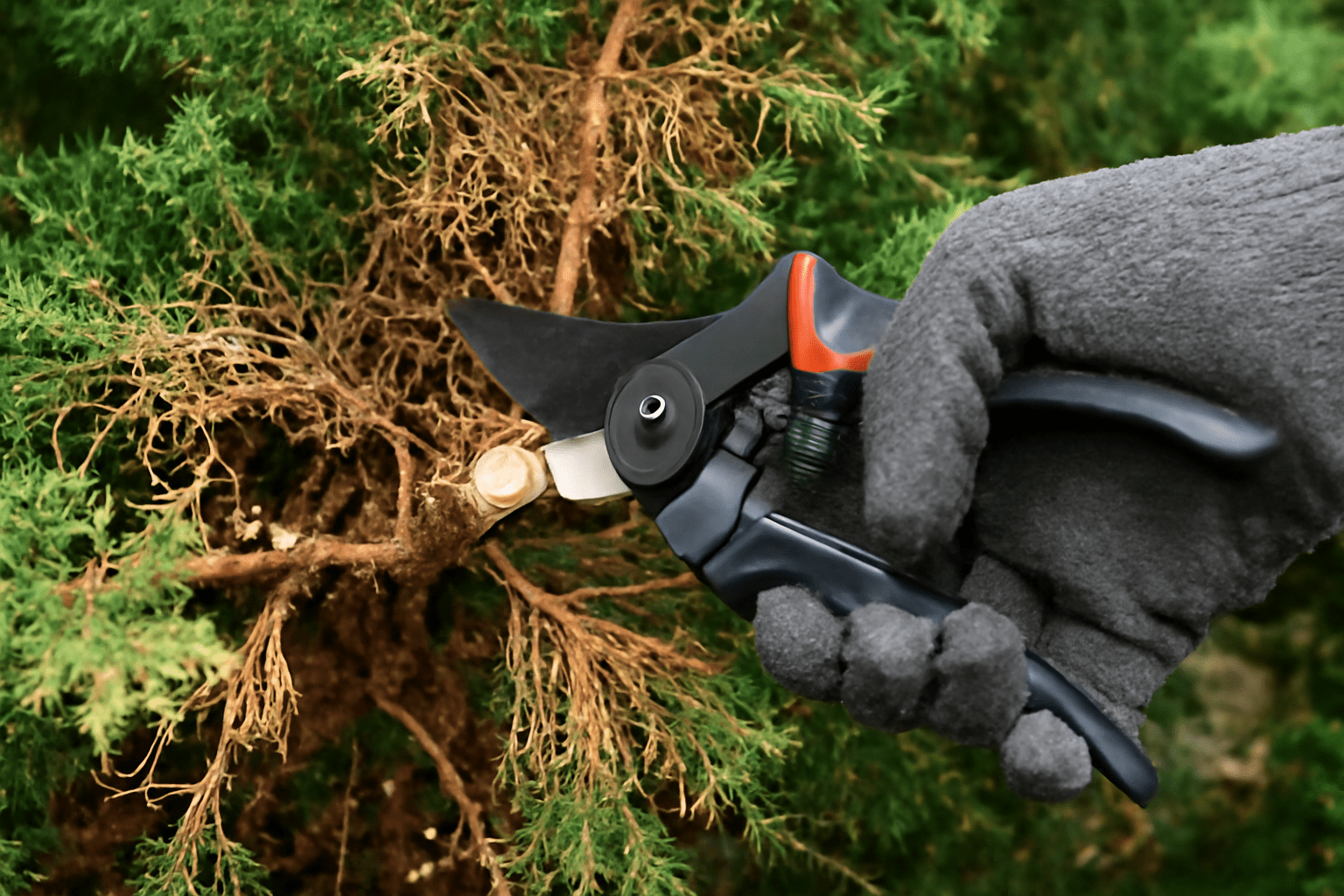
5. Soil Problems (Nutrient Deficiency) 
Junipers need well-balanced, nutrient-rich soil. If the soil is too alkaline or lacks essential nutrients like nitrogen, the tree may show signs of distress, including browning. Conduct a soil test to check the pH and nutrient levels, and amend the soil if necessary.
By understanding these common causes of browning in juniper trees, you can take steps to rectify the situation and help your tree thrive. Keep an eye on water levels, inspect for pests, protect it from harsh weather, and ensure proper care to restore its health!
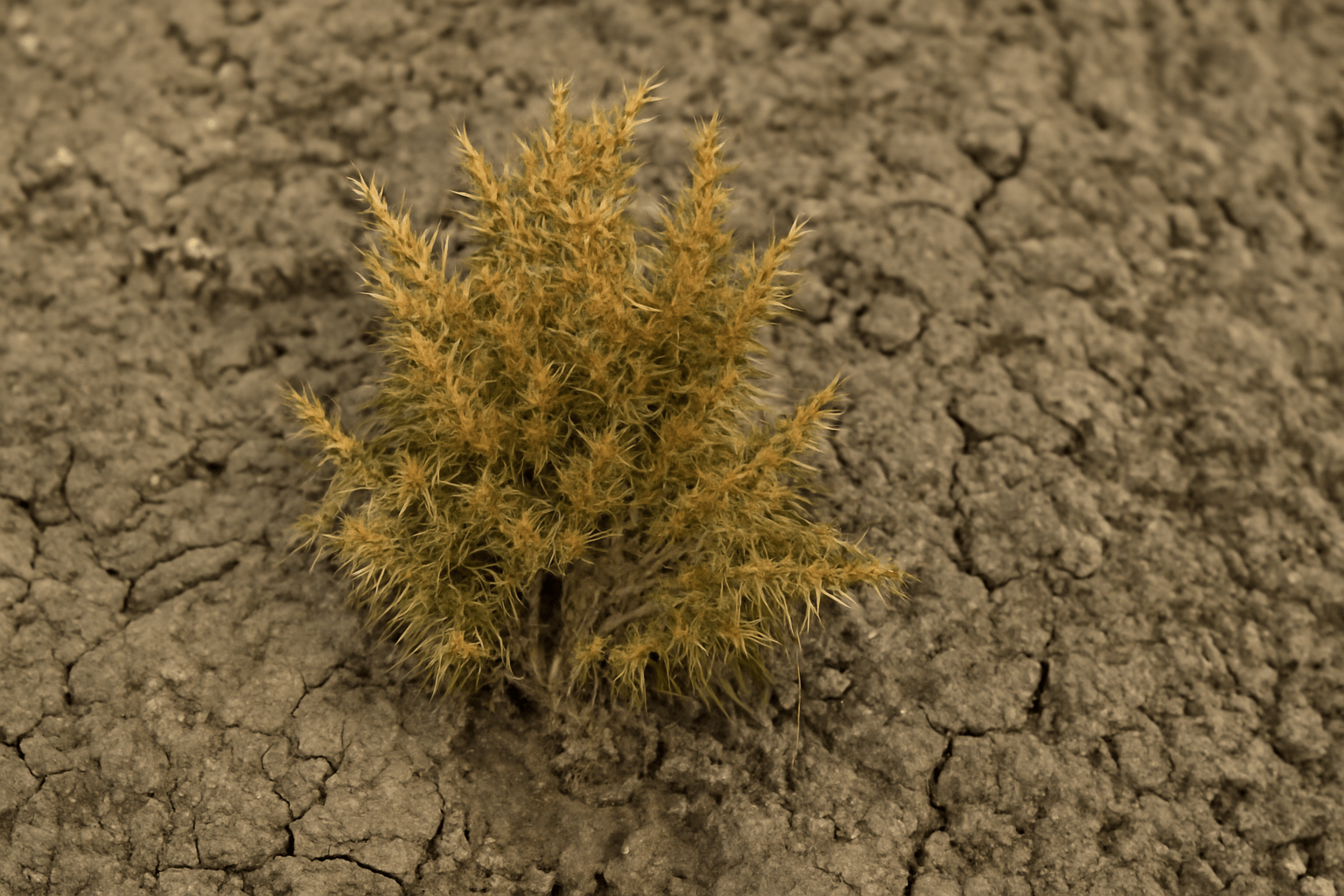
How Overwatering Affects Your Juniper Tree 

Overwatering is one of the most common mistakes gardeners make when caring for juniper trees. While these hardy trees are drought-tolerant, they do not thrive in soggy soil. Too much water can cause several issues that prevent your juniper from reaching its full potential.
Root Rot 
Excess moisture in the soil deprives the roots of oxygen, leading to root rot. This is a dangerous condition where the roots start to decay, weakening the entire tree. If the problem isn’t corrected, the juniper will struggle to absorb nutrients and water, causing its health to deteriorate rapidly.
Yellowing Leaves 
Overwatered junipers often show signs of stress through yellowing leaves or needles. This happens because the roots can’t function properly, leading to nutrient deficiencies. If you notice yellow leaves or wilting despite regular watering, it might be a sign of overwatering.
Weak Growth 
Junipers affected by overwatering will exhibit weak and stunted growth. Instead of growing strong and upright, they may develop a limp, unhealthy appearance. This can be frustrating for gardeners who are hoping to see a lush, thriving tree.
Pests and Diseases 
Stagnant water around the roots creates a perfect environment for pests and diseases to thrive. Mold, fungus, and pests like aphids or scale insects are more likely to infest an overwatered juniper, making it even harder for the tree to recover.
How to Prevent Overwatering 
- Check the soil: Before watering, always check the soil’s moisture level. Stick your finger about 2 inches into the soil. If it feels dry, it’s time to water. If it’s still moist, hold off.
- Water deeply but less frequently: Junipers prefer deep watering that reaches the roots, but only when the soil is dry. Watering deeply encourages the roots to grow deeper, making the tree more drought-tolerant in the future.
- Improve drainage: Ensure your tree is planted in well-draining soil. If your soil tends to retain too much water, consider adding sand or organic matter to improve drainage.
By understanding the risks of overwatering and taking steps to prevent it, you can ensure your juniper tree remains healthy, vibrant, and strong for years to come!
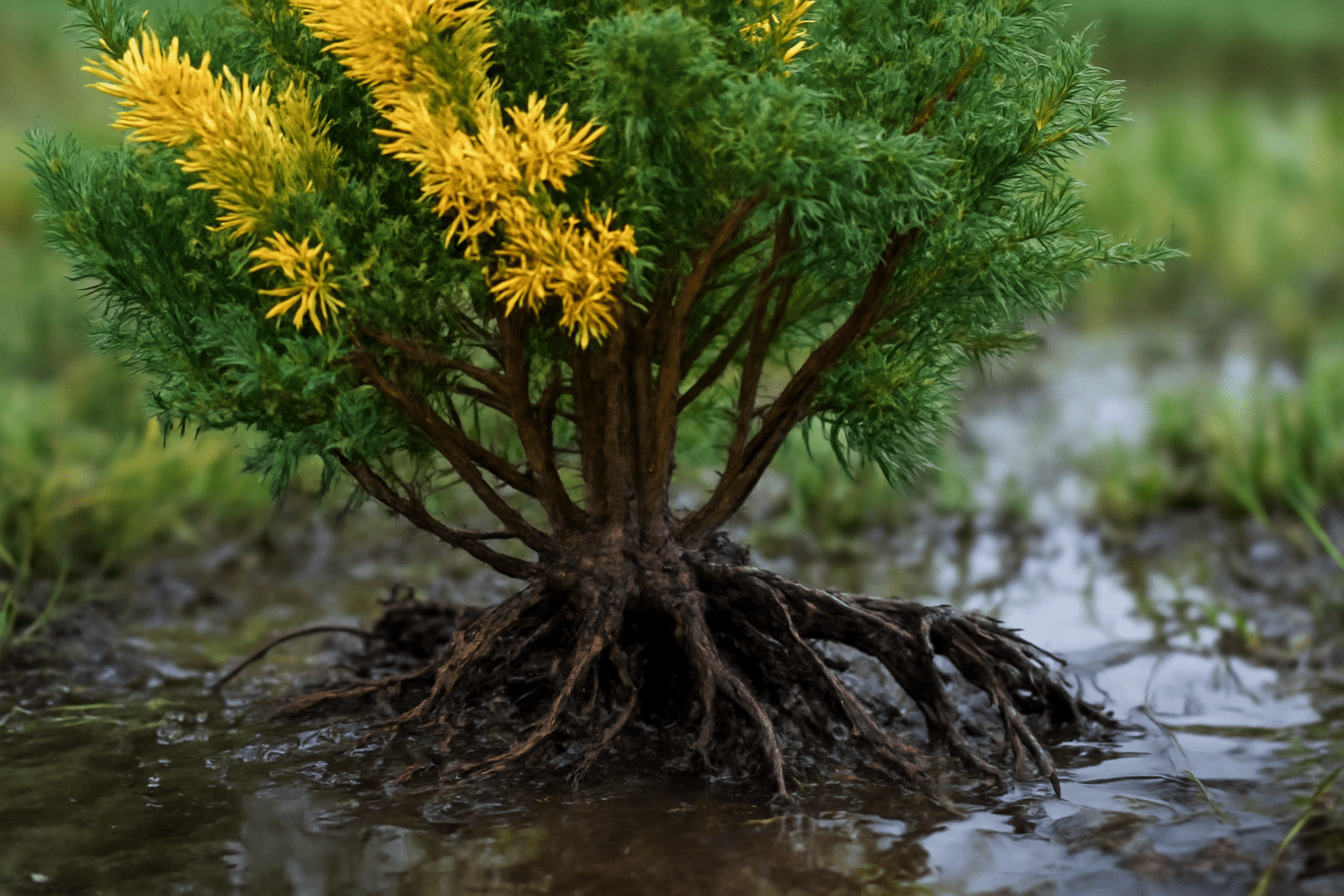
How Underwatering Causes Brown Juniper Needles
Underwatering is a common cause of brown juniper needles, and it can be easy to overlook. These hardy trees are known for their drought tolerance, but they still need regular watering to stay healthy, especially during hot, dry periods. Here’s how underwatering leads to that telltale brown color:
- Insufficient Water Supply: Junipers rely on consistent moisture to maintain healthy foliage. When they don’t get enough water, the needles begin to dry out, causing the green color to fade and turn brown. The tree prioritizes its roots and main structure, often leaving the needles to suffer first.
- Stress and Damage: Without enough water, the tree becomes stressed, weakening its overall health. The lack of moisture hampers the tree’s ability to conduct photosynthesis properly, leading to browning needles. Over time, if the stress continues, the tree may lose a significant number of its leaves.
- Symptoms to Watch For: The first signs of underwatering in junipers are typically brown tips or patches on the needles. If left untreated, the browning can spread, and the tree’s entire canopy may suffer.
- Preventing Underwatering: To avoid this issue, ensure your juniper receives deep watering when the top layer of soil feels dry. Water thoroughly, allowing moisture to reach the root zone. During periods of drought or extreme heat, watering frequency should increase.
By paying attention to your juniper’s water needs and adjusting accordingly, you can prevent the damaging effects of underwatering and keep your tree vibrant and healthy.
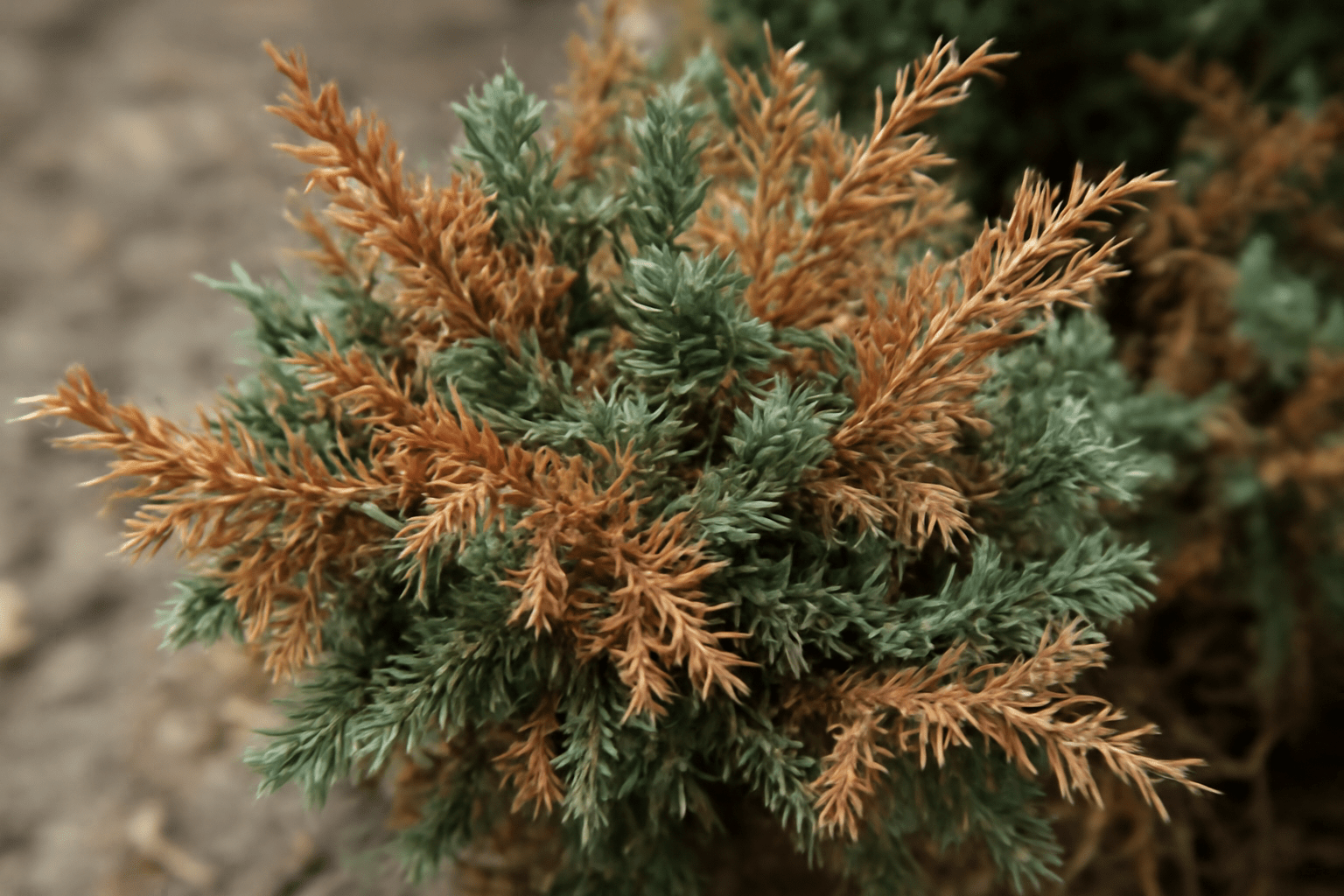
Pests and Diseases That Cause Juniper Trees to Turn Brown
Juniper trees are hardy, but like all plants, they can fall victim to pests and diseases that cause their needles to turn brown. Understanding these threats is key to keeping your tree healthy and vibrant. Here are the common culprits:
1. Juniper Blight (Phomopsis Blight)
This fungal disease is one of the most common reasons juniper trees turn brown. It affects the tree’s foliage, causing it to wilt and die. Infected needles often turn brown or purple. To prevent Juniper Blight, ensure your tree has good air circulation and avoid overhead watering, as moist conditions promote the spread of the fungus. If caught early, you can prune the infected branches and apply a fungicide to control the spread.
2. Spider Mites 
These tiny pests suck the sap from the needles of juniper trees, causing them to turn yellow and eventually brown. Spider mites thrive in hot, dry conditions. If you notice tiny webbing or stippling on your tree’s leaves, it’s time to take action. To manage spider mites, spray your tree with a strong jet of water to remove them or use an insecticidal soap. Regularly misting your juniper tree can also help prevent these pests.
3. Bagworms 
Bagworms are caterpillars that build protective bags around themselves and feed on juniper needles. Their feeding can cause large sections of your tree to turn brown. If you see these bags hanging from your tree, it’s essential to remove them by hand or with pruning shears. For larger infestations, consider using an insecticide designed to target bagworms.
4. Root Rot (Phytophthora)
Root rot is a serious disease caused by waterlogged soil or poor drainage. It affects the roots, leading to nutrient deficiencies that result in browning leaves. To avoid root rot, make sure your juniper tree is planted in well-draining soil. If your tree shows signs of root rot, such as yellowing and wilting leaves, you may need to remove the affected tree and replace it with a more resistant species.
5. Scale Insects 
Scale insects are small, immobile pests that attach to the branches and stems of juniper trees. They feed on sap, leading to brown, withered needles. These pests can also cause black mold to grow on the honeydew they excrete. To treat scale insects, use horticultural oils or insecticidal soap, applying them during the dormant season.
6. Juniper Rust
This fungal disease manifests as orange or yellow spots on the needles, often turning them brown. Juniper Rust requires a susceptible host plant for its full life cycle, such as cedar trees. While it doesn’t typically kill the tree, it can lead to browning and defoliation. Prune away infected areas and try to maintain a healthy growing environment to minimize the impact of this rust.
Final Tips 
Regularly inspect your juniper tree for signs of pests or disease. Early detection is the key to preventing the spread of these issues. By maintaining proper care, including well-draining soil, adequate watering, and proper pruning, you can ensure your juniper tree stays vibrant and healthy.
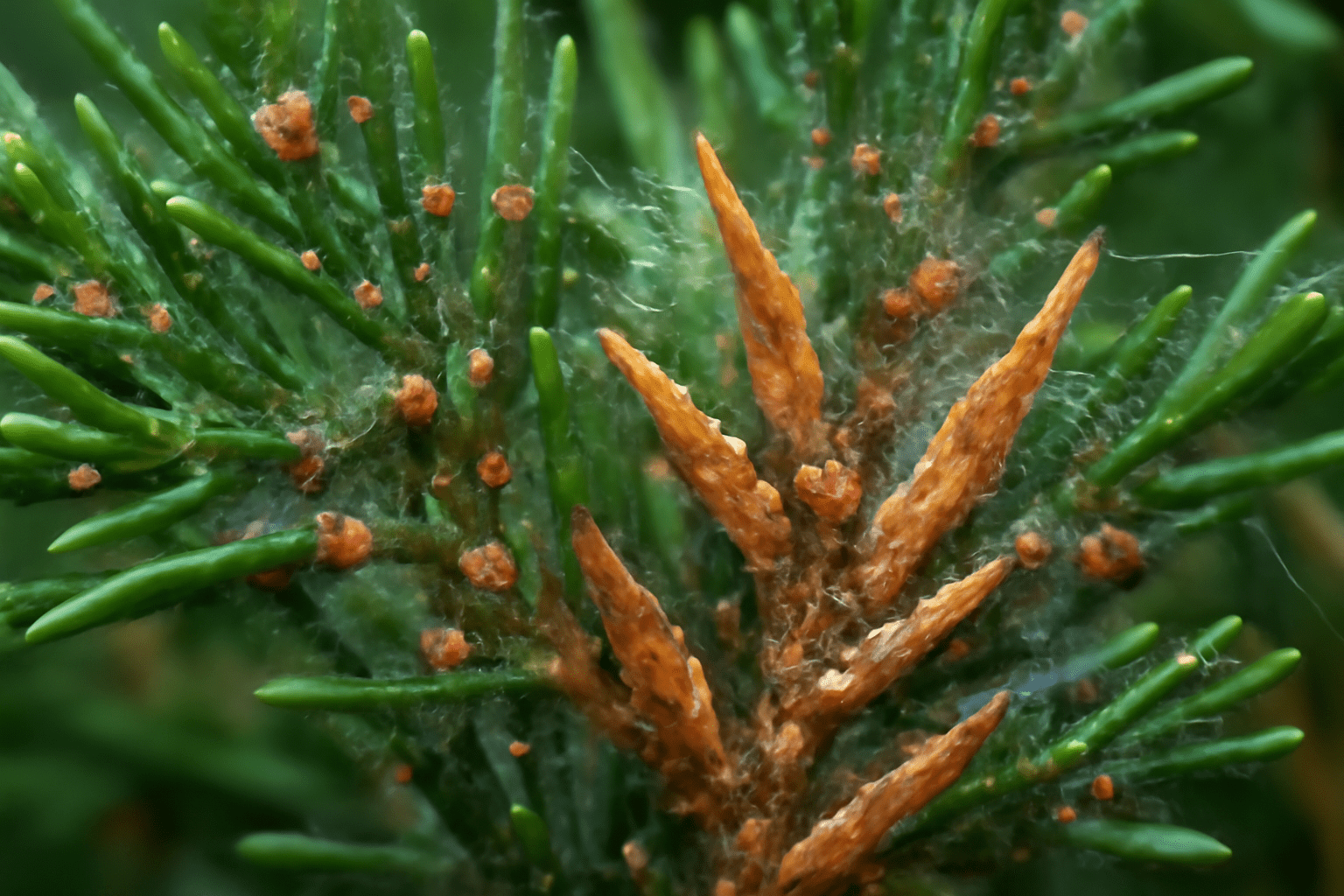
Environmental Stress: Cold, Wind, and Poor Soil
Juniper trees are hardy, but they can still suffer from environmental stress due to extreme weather conditions like cold, wind, and poor soil quality. Understanding how these factors affect your juniper tree can help you take the right steps to keep it thriving. Let’s break down each stressor and how you can protect your tree.
Cold Weather 
Junipers are generally resistant to cold, but prolonged exposure to freezing temperatures can damage their delicate roots and foliage. Cold winds combined with low temperatures can cause needle browning or even kill young trees. To protect your juniper during the winter:
- Mulch the base: Apply a thick layer of mulch around the root zone to insulate the soil and protect the roots from frost.
- Windbreaks: Plant your juniper near structures or other trees that act as windbreaks, or use a protective barrier to shield it from harsh winds.
- Cover young trees: For newly planted junipers, consider covering them with a breathable fabric or burlap during extreme cold spells.
Wind 
Wind can strip moisture from the leaves and cause physical damage to your juniper tree. Wind stress often results in browning or desiccation of needles. To help your tree handle strong winds:
- Water regularly: Keep the soil evenly moist, but not waterlogged, to reduce wind-induced dehydration.
- Choose a sheltered spot: Plant your juniper in a location that is naturally protected from high winds, such as near a fence or building.
- Support young trees: Use staking or other support methods to stabilize newly planted junipers until they establish a strong root system.
Poor Soil Quality 
While junipers are adaptable, they prefer well-drained, slightly acidic soil. Poor soil, particularly heavy clay or overly compacted earth, can lead to root rot or nutrient deficiencies. Here’s how to improve your soil conditions:
- Amend the soil: If you have heavy clay, mix in organic matter like compost to improve drainage and aeration.
- Ensure proper drainage: Plant junipers in raised beds or mounds to prevent waterlogging around the roots.
- Fertilize appropriately: Apply a slow-release, balanced fertilizer in early spring to provide the necessary nutrients for healthy growth.
By addressing these environmental stressors, you can give your juniper the best chance to grow strong, healthy, and resilient.
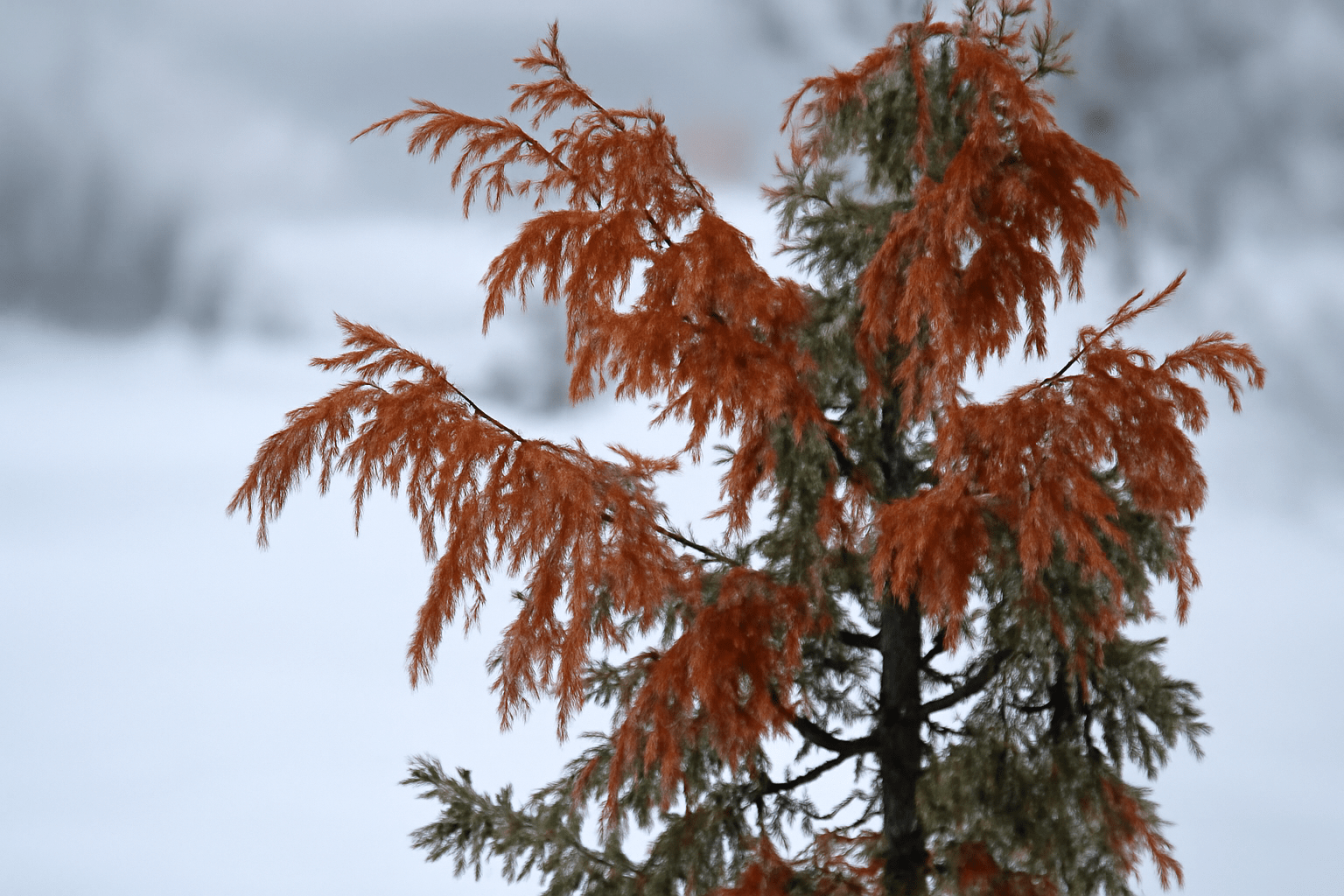
How to Fix a Juniper Tree Turning Brown
If your juniper tree is turning brown, it can be alarming, but don’t panic—there are several common causes, and most are fixable with a little attention. Here’s a step-by-step guide to help your tree recover and stay healthy.
1. Check for Underwatering or Overwatering 
One of the most common causes of browning in junipers is improper watering. Both underwatering and overwatering can stress the tree, causing it to turn brown.
- Underwatering: If the soil feels dry to the touch, it’s time to water your juniper. Deep watering once a week, especially during dry spells, can help restore moisture.
- Overwatering: On the flip side, too much water can suffocate the roots and lead to root rot, causing the tree to brown. Make sure the soil is well-draining and the roots aren’t waterlogged.
2. Inspect for Pests 
Pests like spider mites, aphids, and scale insects love juniper trees. These pests suck sap from the leaves, leading to yellowing and browning.
- Solution: Check your tree for tiny insects or webs, especially on the undersides of leaves. If pests are found, treat the tree with insecticidal soap or neem oil to get rid of them safely.
3. Look for Fungal or Disease Issues 
Juniper trees can fall victim to fungal infections like blight or root rot, which cause browning of the leaves and branches.
- Solution: If you suspect a disease, prune away any infected branches. Use a fungicide to treat the remaining healthy parts of the tree, and make sure your tree has proper air circulation to avoid future outbreaks.
4. Adjust Sunlight Exposure 
Junipers thrive in full sunlight, but too much intense heat or sudden exposure can lead to stress, causing browning.
- Solution: Ensure your tree is planted in an area that gets adequate sunlight but isn’t exposed to extreme, unrelenting heat. If necessary, move potted junipers to a location with partial shade during the hottest parts of the day.
5. Improve Soil Drainage 
If your juniper tree is planted in soil that holds too much water, it may suffer from poor root health, leading to browning.
- Solution: Improve soil drainage by amending the soil with organic matter or creating raised beds. This will prevent water from accumulating around the roots and ensure better overall health.
6. Prune Dead or Damaged Branches 
Browning needles are often a sign of damage or dieback. Removing these damaged parts helps the tree focus its energy on healthy growth.
- Solution: Trim off any brown or dead branches with sharp pruning shears, cutting back to healthy wood. This will help your juniper grow back stronger and more vibrant.
By addressing these common issues, you can get your juniper tree back to its vibrant self in no time. Regular care and monitoring will ensure your tree remains healthy for years to come!

Conclusion
Seeing your juniper tree turn brown can be concerning, but with the right steps, it’s often a problem you can fix. Whether it’s overwatering, underwatering, pests, or environmental stress, understanding the root cause of the issue is key to restoring your tree to health. By adjusting your watering habits, addressing pests, and improving soil conditions, you can help your juniper thrive again.
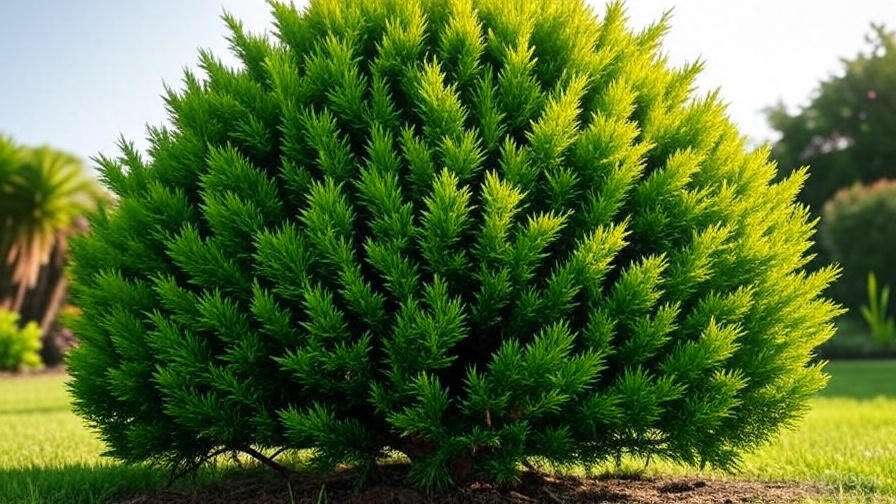
Remember, regular care and early intervention are essential to prevent browning in the future. With the practical tips shared in this guide, you now have the tools to give your juniper tree the best chance to flourish. Take action today and watch your tree recover, adding vibrant greenery to your garden once more!
Frequently Asked Questions(FAQ)
Why is my juniper tree turning brown?
Juniper trees can turn brown due to several reasons, including overwatering, underwatering, pests, diseases, or environmental stress like extreme weather. It’s important to check soil moisture, inspect for pests, and assess environmental conditions to identify the cause.
How can I tell if my juniper tree is overwatered or underwatered?
If your juniper tree is overwatered, the needles may turn yellow or brown, and the soil may feel soggy. Underwatered trees typically have dry, crispy brown tips on the needles, and the soil will be dry to the touch. Check the soil moisture to confirm which issue you’re dealing with.
What pests cause juniper trees to turn brown?
Common pests that can cause juniper trees to turn brown include spider mites, aphids, and scale insects. These pests suck sap from the tree, causing needle damage and browning. Regular inspection and the use of insecticidal soap or neem oil can help control these pests.
Can diseases cause juniper trees to turn brown?
Yes, fungal diseases like juniper blight can cause juniper trees to turn brown. These diseases typically cause the foliage to die off in patches or entire branches to brown. Fungal treatments, like fungicide applications, can help manage this issue.
How can I fix a juniper tree turning brown due to overwatering?
If overwatering is the issue, reduce watering frequency and improve drainage around the tree. Ensure the soil dries out between waterings, and consider adding mulch around the base to regulate moisture levels. In severe cases, you may need to transplant the tree to a better-draining location.
How do I restore a juniper tree turning brown due to underwatering?
To fix underwatering, start by watering your juniper tree deeply, ensuring that the water reaches the roots. Mulch around the base to help retain moisture and prevent the soil from drying out quickly. Keep a consistent watering schedule during dry periods.
Can cold weather cause juniper trees to turn brown?
Yes, cold weather, especially sudden frost or harsh winds, can cause juniper trees to turn brown. Protect your tree by covering it with burlap or placing it in a sheltered location during extreme cold. Mulching around the tree can also help insulate the roots.
How can I prevent my juniper tree from turning brown in the future?
To prevent browning, ensure proper watering (not too much or too little), control pests, and protect the tree from harsh environmental conditions like extreme cold or drought. Regularly inspect your juniper for signs of stress and address any issues promptly to keep your tree healthy.





